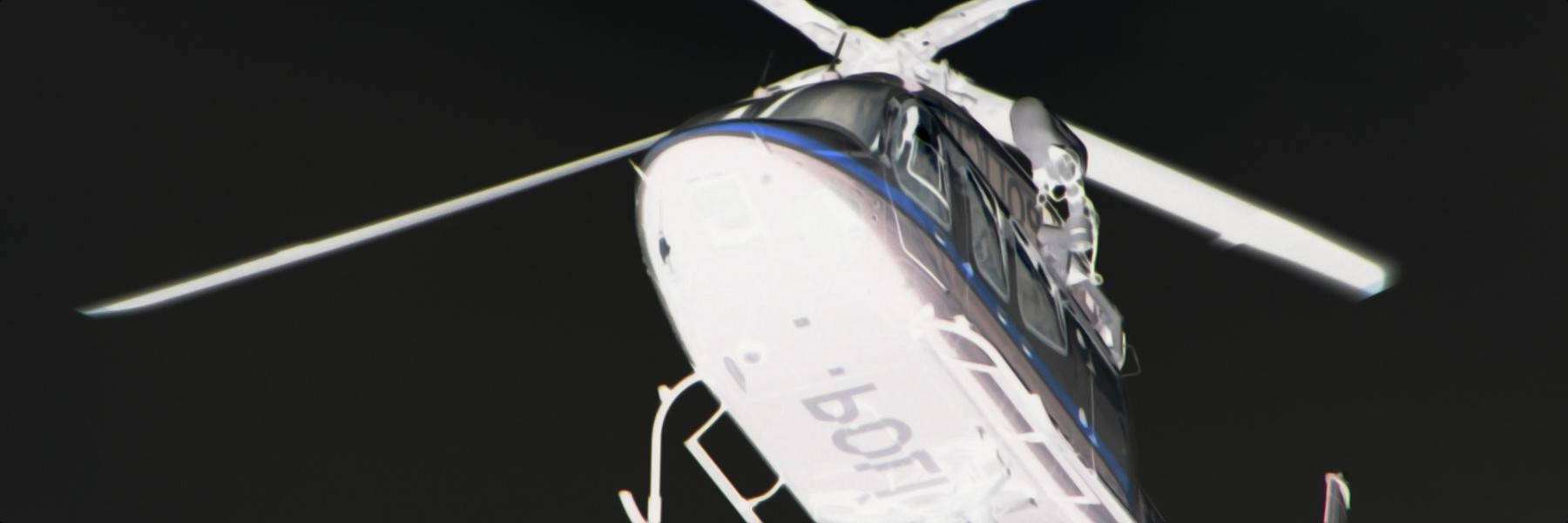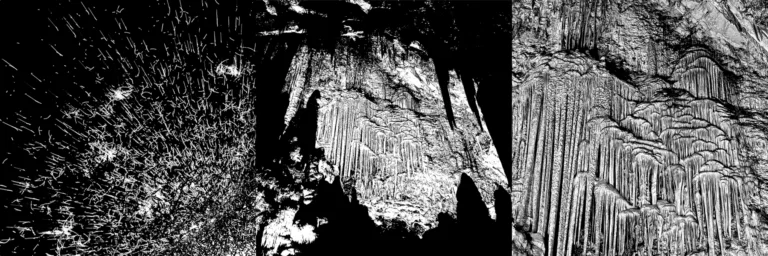The exact circumstances surrounding the production of the album “She’s Suspiring” are largely unknown. However, certain facts or at least partial certainties can be gleaned from the interview provided below.
Tracklist
01 ⋅ After the Low ⋅ 2:50
02 ⋅ From Me to You ⋅ 5:20
03 ⋅ Good Bloom ⋅ 3:30
04 ⋅ I Fray ⋅ 4:10
05 ⋅ Megacity Escort ⋅ 4:20
06 ⋅ Never Heard Me ⋅ 4:00
07 ⋅ One of Us ⋅ 3:00
08 ⋅ She’s Expiring ⋅ 4:00
09 ⋅ Thestral Nation ⋅ 4:30
10 ⋅ Umbrace ⋅ 5:00
11 ⋅ While I’m Away ⋅ 3:40
Interview with the Artist
Good day, Mr. Imperfektionist. How are you today?
Why so formal? Feel free to call me “Imperfektionist.”
Your brand-new album “She’s Aspiring” was released much earlier than expected.
Actually, it was originally planned to be released closer to Christmas, but I swapped deadlines with the completion of my novel that I’m currently working on. This technique is called “Semi-Procrastinating,” I learned it in university in the module “Fundamentals of Very Work-Unrelated Work.”
With the title, you are referencing your albums “She’s Expiring” and “Inspiring.”
You shouldn’t take that too literally. “Inspiring” had some uninspiring songs on it. Not everything on “Expiring” was about decay and breaking up. And on “Aspiring,” almost nothing fits the concept anymore. But fundamentally, it’s about her aspiring, her intellectual striving as a person. She’s inserting herself into my life and wants nothing more than my favor, my love, and a song from me.
We’d all surely like such a person.
Nonsense, as if I would leave the aspiring to my love interests. I like the role of the actor, and I won’t give it up, especially not to a shabby album concept based on a poor wordplay. “Thestral Nation” comes closest to the overarching theme. But she already has a boyfriend, and I have no idea where I’d bury his body.
In the first track “After the Low,” you’re hardly recognizable.
That’s because two robots from my basement are singing it, trying to sound like three. At 60 BPM, it’s in fact my slowest track. It was even too slow for my metronome, hence the clock that normally hangs in the hallway.
The lyrics sound quite beautiful. What’s it about?
You must not understand English either, huh? Otherwise, you’d know that the lyrics are anything but beautiful. It’s about someone who had sex with an angel and stole her wings in the process. Therefore, the angel can’t go back to heaven and is forced to become a prostitute. A few years later, they meet again, but because they have no money, they pay with the wings. I suspect she died anyway.
A fairy tale! Speaking of… “Thestral Nation,” that sounds like it’s from Harry Potter.
Caught red-handed. Imagine you’ve seen a girl die in your arms and start seeing magical creatures everywhere that were invisible before. I’m particularly fond of one, because she’s aspiring and buys my heart with sugar, even though or especially because she’s the queen of this mystical nation. In the end, it turns out I’m a Thestral too, and she can’t see me at all.
And yet she wanted you to dedicate a song to her?
I always say, if a girl aspires, one song is okay. Two songs, it gets serious. My approach is always the same, “Describe yourself in a few adjectives.” “Huh, am I supposed to write my own song now or what?” “Of course, girl. Time is money.” “Okay. Spontaneous, crazy, ambitious, open,” and since she doesn’t want to present herself too positively, she adds a timid “moody” at the end. Thanks to her self-description, I now know everything about her and start working on her song.
And if she didn’t even ask for a song?
Either she’ll never find out, or I’ll just send it to her. On the internet, we’re all unbiased and free from punishment. The song can still lead to uncomfortable situations, though, which I now just take with humor. For example, in “Never Heard Me,” a girl who’s never heard my music is confronted with her own song. “Did I hear that correctly: I still wonder, are you shy or gay? I’m probably both.” It was the best rejection I’ve ever received.
You’re using a disturbing soundscape again in this song.
All everyday noises, they’re meant to make the songs sound more natural, as if they’re out in the wild. Can you guess which two sounds are in “Never Heard Me?” I’ll give you a few options: a fizzy tablet dropping backwards into a glass of water, a hair dryer, stirring a milkshake, chewing tortilla chips, crumpling aluminum foil, or biting into ice cubes.
And what about the bong sound in “Good Bloom?”
Excuse me‽ I’d never do something like that! Those are a garlic press and a large cup of black tea. However, I did choke on it, so it sounds like coughing, which fit the song perfectly.
But how should your listeners receive that?
If only I had some! The issue hasn’t changed much. Occasionally, a few people accidentally click and end up with my cover versions when they wanted the original.
Why did you record cover versions this time around anyway?
With “From Me to You” and “One of Us,” I wanted to express my gratitude to two very prominent bands of the last century and of my childhood. It’s possible that the world will never experience drumming as virtuosic as The Beatles’ or such wonderful authenticity as in the German-language ABBA songs.
“From Me to You” sounds quite different from The Beatles’ version.
It saddens me a bit that you perceive it that way. I deliberately avoided digital effects. Perhaps you’re bothered by the synthetic carpet I’ve dubbed “Hendrix,” adding a Jimi note to the song. The major seventh in the guitar plus the major ninth in the carpet create the ultimate alienation. I also changed the lyrics a bit, but the core message remains the same: love.
This song is your longest so far. Overall, all the songs have become longer.
True. I used to make short pop, but that’s not enough for me anymore. I want more, even though I still want to stick to the magical number eleven, the number of titles per album. And don’t be surprised by the round numbers in the title lengths. Before composing, I hold my breath, stop time, then divide by the mass of dirty dishes in the kitchen and round up twice plus one over the golden ratio. This method has proven effective for determining the perfect beats per minute for a song.
“One of Us,” your ABBA cover, sounds a bit overloaded.
[Laughs] … yeah, that song turned out to be an utter failure. I recorded it with headphones on and then realized that the speakers were also playing. So, you can hear the entire mix, including the metronome, on the nylon guitar track. I tried again, this time with the acoustic guitar, but there’s a note called C-sharp that somehow sounds much louder than the other notes. Much larger bridges have succumbed to their natural frequencies. What do you do when you have two bad alternatives to choose from? You play both at the same time, at reduced volume. To make the madness complete, I also added the electric guitar playing the exact same thing.
It’s noticeable that you generally use two different song concepts.
Exactly, I write “Bangers” and I write “Grinders.” In a banger, one part follows another, sometimes it really pulls you in. Through bangers, I save space. I let myself be influenced by music that I enjoy listening to. This creates a massive discrepancy between genres. It would be impossible for everyone to like everything. A grinder is structured differently, it’s uniform. Individual audio tracks are added or removed, but the pattern doesn’t change. I exclusively draw grinders from within myself, they are congruent, they are style-directed.
What are some examples of this?
A banger would be the previously discussed “From Me to You” or, even better, “Thestral Nation.” A narrative verse, so heavy it can barely carry itself. A wordless chorus at double speed, that’s 168 BPM, after all. A thrashed breakdown that’s meant to sound like waves in 13/16 time. All these parts could have been their own songs if I had more than eleven songs per album.
And what are examples of grinders?
I’d count “After the Low,” “Megacity Escort,” or “Umbrace” as grinders. At this point, a huge thanks to my mentor Thomas, who introduced me to modular song construction. Among other things, he bequeathed me a machine whose value can hardly be expressed by its technical specifications. This so-called looper has made composing grinders very easy.
In all three songs, one hears more piano than usual. How did that come about?
I was surprised too, but one day this piano just appeared in my room. At first, I was skeptical and didn’t even place clothes on it. But then I thought, why not, and started using it. We’ve become good friends, me and the ironing board.
What’s the deeper meaning behind “Megacity Escort?”
It’s about an online dating app that almost everyone has, but no one takes it seriously. I installed it with the initial idea of capturing my experiences in a song. The theme of digital, “artificial” love fascinates me.
You tell this experience with the words “She has not showed up.”
“Shown up,” I know! That’s why they call me Imperfektionist. In fact, I hate that song now. Of course, she didn’t show up because she doesn’t exist. I flirted with artificial intelligence for weeks without even realizing it. Oh, how disappointed I was. But I quickly recovered. If I were younger, I would’ve converted myself into bits and bytes to send myself through the wires after her, but I’ve long outgrown it.
You seem less reserved this time.
I noticed that too. The last two interviews seemed shorter to me. I suspect it’s because I’m slowly getting used to the sound of my own voice. I hear that a lot from people when I show them my mixing, “Doesn’t it bother you, always hearing your own voice?” “Not at all,” I say, and add even more compressor, saturation, EQ, reverb, delay, Ville Valo, and Auto-Tune.
That was a joke, right?
Believe me, if I had Auto-Tune, I’d use it!
Where do you want to go with your music?
Tough question. Unfortunately, I’ll have to leave the answer to that until the next interview. Artists hardly earn from recordings anymore; they can even go bankrupt from them. But I’ve also ruled out live performances, too much would be lost because I can only play a limited number of instruments simultaneously. DJs who simply play their music live don’t face this dilemma. But let’s be honest: Imperfektionist isn’t danceable. It’s not even head-bangable.
Then why don’t you teach your songs to other musicians?
Please, please. I’m always happy to be interviewed by you. By the way, the next album will be entirely in German.
You’ve claimed that before and not followed through.
No, I’m serious this time. I’m in the mood for consistently German music, with trombones, reggae, and rap, themes like “Summer is getting hot” or “This day is like a kiss.”
Then we’re looking forward to that, and until next time.
[Sings] … Dieser Tag ist wie ein Kuss, wir trinken Caro®-Kaffee mit Schuss … dieser Tag ist wie ein Traum, wir kiffen unterm Holderbaum … („This day is like a kiss, we drink Caro® coffee with a shot; this day is like a dream, we’re getting stoned under the elder tree”)




Leave a Reply